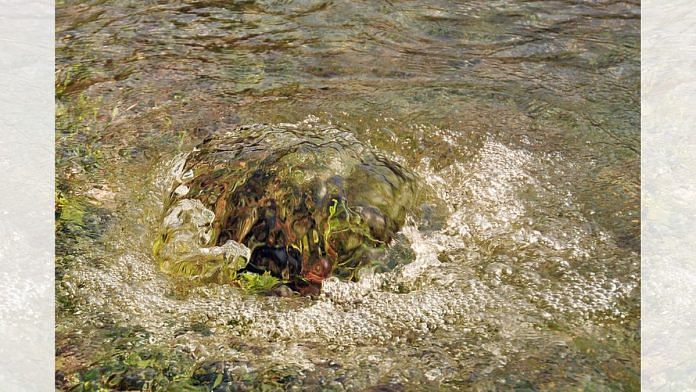New Delhi: On December 28, during a tubewell drilling operation in the Mohangarh town in Rajasthan’s Jaisalmer, water started gushing out of the desert. Workers, along with the residents of the locality, looked on in surprise and panic. Soon, speculations of the resurfacing of the ancient Saraswati River were doing the rounds.
However, scientists and senior state officials who have examined the site since the incident said there is a scientific explanation for this sudden water spurt. They pointed at the likely presence of an “artesian well”, i.e., a water well where water flows under natural pressure without pumping.
“This water seemingly does not have any connection to the Saraswati River. The flow of water has now stopped, and there is no safety concern for residents,” said a senior hydro-geologist with the groundwater department in Rajasthan, Narayan Das Inakhiya, who was in charge of a joint team assessing the situation.
What an artesian well is
Officials said water sometimes gushes out from an “artesian well” in deserts, such as Jaisalmer, where water usually remains confined and encased within a geological sandstone layer.
According to the Rajasthan government officials, the incident occurred roughly at 10 am on December 28, when workers were digging a tubewell in the fields of the BJP city unit head, Vikram Singh. The ground was dug up to 850 metres when water gushed out before continuing to leak for nearly three days.
“The drilling work was going on for the tubewell. During drilling, it seems that there was a breach of the sandstone barrier above the water, causing the water to rush out with such force,” an official from the Rajasthan government said.
Independent experts agreed that that is the only plausible explanation.
Virendra M. Tiwari, director at CSIR NEIST (North East Institute of Science and Technology), said the borewell being dug must have “punctured the confined aquifer mapped by heliborne surveys in Jaisalmer, leading to a gust of fresh water”.
Speaking to ThePrint, BJP leader and former MP Manvendra Singh said that such aquifers are not uncommon in Rajasthan. The only unusual aspect about the latest burst was the presence of gases.
“They have tested the gases and found that those were safe. These aquifers had, in the past, been sources of local water,” said Singh.
What next
Officials said that when water rushed out of the aquifer, it had small amounts of non-flammable gas. However, government teams confirmed that this gas was not hazardous.
Union Minister for Science and Technology Jitendra Singh said that scientists from CSIR will investigate the site in the coming days and discuss the need to conduct detailed surveys in the state to spot more such underground aquifers.
“We have equipment that can scan the surface and identify the presence of water underneath the surface. We will discuss if interventions are needed,” Singh said.
(Edited by Madhurita Goswami)
Also Read: Delhi recorded most number of clean air days in 2024 with ‘good-moderate’ AQI






